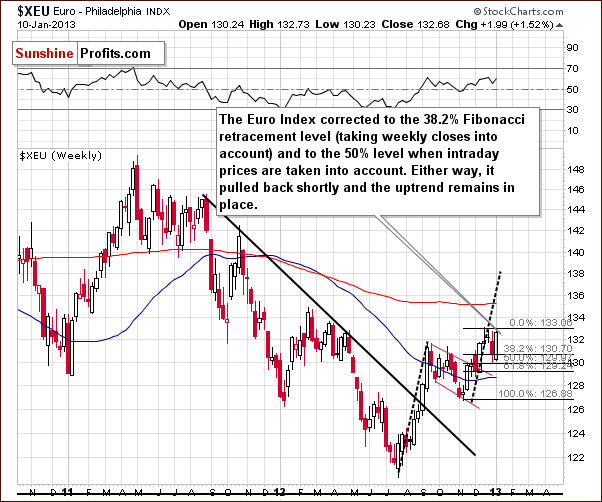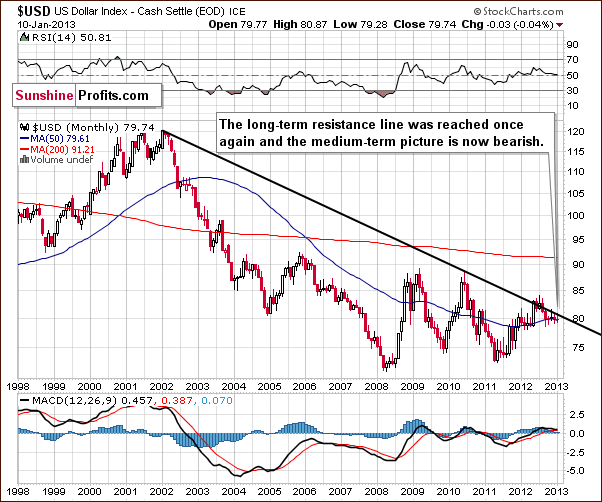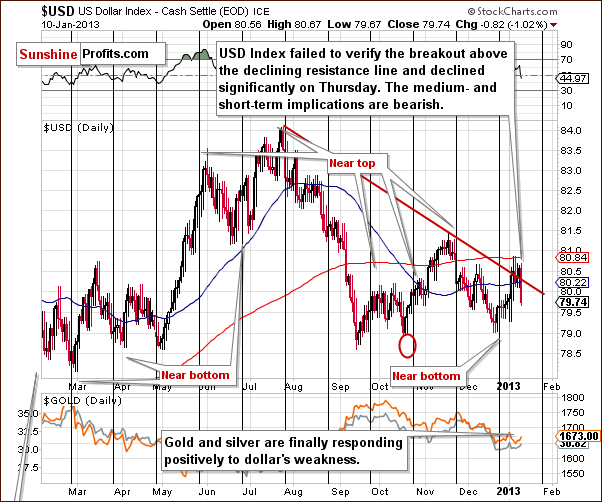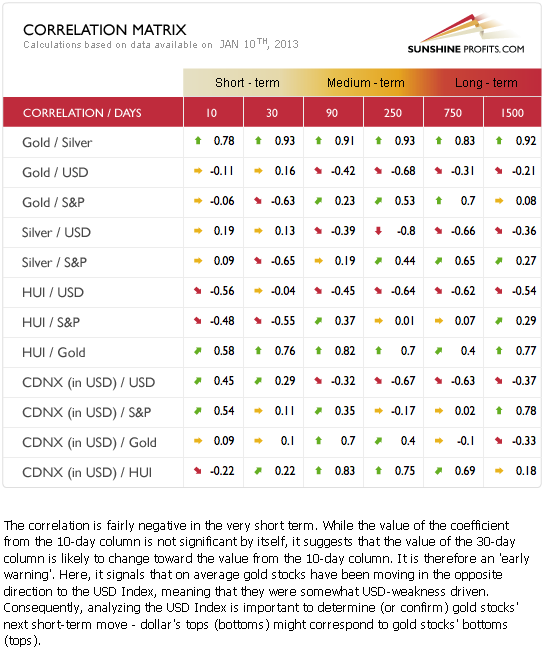Visit our archives for more gold & silver articles.
Correlation is a useful measure – it helps us make predictions about a variety of events. But it’s also a bit tricky – while there are relationships that seem stable (such as the fact that rich people tend to spend more on luxury goods than the less wealthy), there are some that do experience some volatility. These require special caution, as relying blindly on what was seen in the past without checking whether it is still true can lead to disaster.
Unfortunately, precious metals markets fall into the latter category, hence the relationships between particular assets need constant monitoring in order to be useful and – which is even more important – not to be harmful to the investors. We have already written about the correlations between gold, silver and U.S. dollar turned upside down, and it seems that a lot of what was written then is still in place, however, due to the fact that markets change every day, it is a good idea to see if there are any indications that the situation will soon return to normalcy.
To do so, let us move on to the technical part of today’s essay – we’ll start with the analysis of euro’s long-term chart (charts courtesy by http://stockcharts.com.)

We saw a sharp rally last week as the declines of late 2012 were erased and the index is back to levels not seen since December. With the correction behind us, it now seems that higher values are likely as a short-term uptrend is in place.
The most recent declines stopped at two Fibonacci retracement levels. The first was the 38.2% level based on weekly closing prices and the second the 50% level based on intra-day lows. The Fibonacci retracement levels once again have shown their value as a useful technical tool.
Let’s move on to the U.S. currency and see whether the rally in euro has had any influence on the USD.

We begin the analysis of the USD Index with the long-term chart since it gives us a bigger perspective. With the situation bullish for the euro, it seems that a bearish outlook here would be no surprise. This is very much the case as the index closed below the resistance line yesterday. No breakout has been seen and a recent attempt to move above this line was invalidated. The outlook here is clearly bearish at this time; the resistance line appears strong enough to hold a possible short-term rally in check.
Now, let’s have a look at the USD Index short-term chart.

Here, we have similar implications to what was seen from the long-term perspective. The index dropped significantly on Thursday after an unsuccessful attempt to break out above the declining resistance line based on tops seen last year in July and November. The invalidation is a bearish factor and likely a major contributor to Thursday’s decline. The index closed even lower on Friday after having tried to move much higher that day which is a bearish indication. It seems that additional moves to the downside are ahead along with additional rally in the Euro Index.
An encouraging development last week was that the precious metals rallied when the USD Index declined, seemingly a step towards return to normalcy, that is, negative correlations between the dollar and the metals. We would like to see more of this, however, before stating that this bullish development is once again in place.
Finally, let us have a look at the intermarket correlations to see how what we saw last week translates into the numbers, and whether we can expect any improvements in the correlation structure soon.

The Correlation Matrix is a tool, which we have developed to analyze the impact of the currency markets and the general stock market upon the precious metals sector (namely: gold & silver correlations). On Thursday, we saw something that contributed to a possible move back to the normal correlations. It is too early to say, however, that the negative correlation between gold, silver and the mining stocks and the USD Index is definitely back. What’s normal? Negative correlation between metals and the dollar and positive one between metals and stocks – just like you can see in the medium term columns. Why should you care? Because without this correlation in place, lower values of USD Index may not translate into higher values of precious metals – this is what we've been seeing for a few weeks now.
We prefer to see a few more days of declines in the dollar and higher prices for precious metals before saying that the worst is over with respect to the upside down correlations. While it is more likely than not that lower values for the dollar will coincide with higher precious metals prices, this is not yet something we would describe as “highly likely”. And this could be viewed as the answer to the title question: Correlations should be constantly monitored in order to avoid formulating conclusions and forecasts automatically – someone who’s heard that “when USD rallies, gold falls” could decide to sell the yellow metal because of the strong dollar and lose lots of money in the profits that they would not make – that could be the case when gold rallies along with the USD Index, when it’s being pushed higher by the demand from Europe and Asia. Such scenarios will likely take place some time during this and/or the following years, so it is important to keep the correlations in mind and check them before taking big steps regarding your gold & silver investments.
Summing up, the outlook for the euro is bullish for the short term but bearish for the USD Index for both the short and medium term. The implications from the currency markets this week are bullish for the precious metals sector overall, but may have no direct, instantaneous effect until correlations return to their normal values.
Please keep in mind that the situation on the precious metals market may change quickly and what you read above may become outdated before you read our next free essay. That's why our premium subscribers receive Market Alerts as soon as anything important takes place (the latest one was sent out today right after markets opened in the US) - they remain covered at all times. Moreover, our subscribers read full versions of our articles that we call Premium Updates - they are much more in-depth and thorough than free commentaries posted in this section, so by reading them you are better and earlier prepared when major changes regarding gold and silver occur. Premium Updates include price targets and trading suggestions as well. Our subscribers also enjoy up-to-date and tailor-made (!) gold stocks ranking, silver stock ranking and more. Traders particularly value the ability to track the accurate SP Indicators dedicated to the precious metals market without the weekly lag. We encourage you to join our subscribers and also enjoy all of the above-mentioned benefits.
Thank you for reading. Have a great weekend and profitable week!
Sincerely,
Przemyslaw Radomski, CFA

